
Drosera peltata, commonly called the shield sundew or pale sundew, is a climbing or scrambling perennial tuberous species in the carnivorous plant genus Drosera. Among the tuberous sundews, D. peltata has the largest distribution, which includes eastern and western Australia, New Zealand, India, and most of Southeast Asia including the Philippines. The specific epithet is Latin for "shield shaped", a reference to the shape of the cauline leaves. It is either a single extremely variable species, or a complex of several closely related species of uncertain taxonomic boundaries. In Australia at least four forms have had or still have specific taxonomic recognition: Drosera peltata subsp. peltata, D. peltata subsp. auriculata, D. foliosa and D. gracilis.

Baccharis is a genus of perennials and shrubs in the aster family (Asteraceae). They are commonly known as baccharises but sometimes referred to as "brooms", because many members have small thin leaves resembling the true brooms. They are not at all related to these however, but belong to an entirely different lineage of eudicots. B. halimifolia is commonly known as "groundsel bush", however true groundsels are found in the genus Senecio.

Baccharis pilularis, called coyote brush, chaparral broom, and bush baccharis, is a shrub in the family Asteraceae native to California, Oregon, Washington, and Baja California. There are reports of isolated populations in New Mexico, most likely introduced.

Baccharis linearis, the romerillo or Chilean little rosemary, is a common shrub in Central Chile. It is frequently found in old field after agriculture. Cecidia or galls caused by the fruit fly Rachiptera limbata grow as white, spongy and globose tissues on the twigs of the plant.
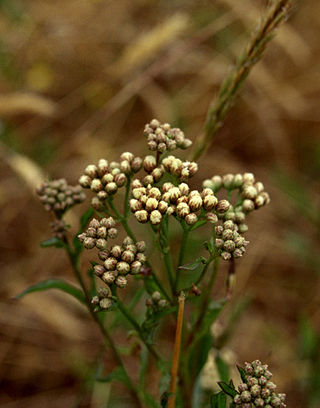
Baccharis glutinosa is a species of flowering plant in the family Asteraceae known by the common names saltmarsh baccharis and Douglas' falsewillow.

Baccharis halimifolia is a North American species of shrubs in the family Asteraceae. It is native to Nova Scotia, the eastern and southern United States, eastern Mexico, the Bahamas, and Cuba.

Baccharis sarothroides is a North American species of flowering shrub known by the common names broom baccharis, desertbroom, greasewood, rosin-bush and groundsel in English and "escoba amarga" or "romerillo" in Spanish. This is a spreading, woody shrub usually sticky with glandular secretions along the primarily leafless green stems. The small, thick leaves are a few centimeters long and are absent much of the year, giving the shrub a spindly, twiggy appearance. It flowers abundantly with tiny green blooms on separate male and female plants.
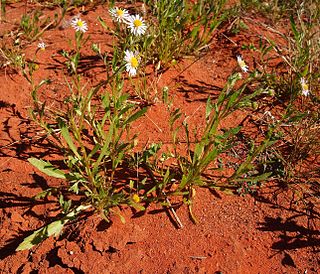
Vittadinia is a genus of Australian and New Zealand plants in the tribe Astereae within the family Asteraceae.
Ipomoea gracilis is a plant in the bindweed family, Convolvulaceae. It is found in northern and north-eastern Australia.
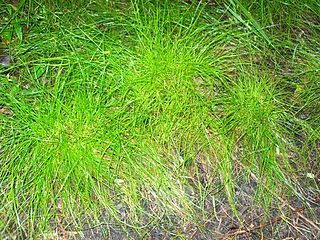
Cyperus gracilis, with the common name is slender flat sedge and slimjim flatsedge, is a sedge native to Australia. The species epithet gracilis refers to the graceful form of the leaves.

Baccharis salicina is a species of plant in the family Asteraceae. Common names include willow baccharis, and Great Plains false willow. It is a shrub found in North America where it grows in mildly saline areas.

Urtica gracilis, commonly known as the slender nettle, tall nettle, or American stinging nettle, is a perennial plant plant without woody stems that is well known for the unpleasant stinging hairs on its leaves and stems. It is native to much of the North America from Guatemala northwards and temperate areas of South America. It is easily confused with the visually very similar Eurasian species Urtica dioica and is still listed in some resources as a subspecies of this plant. However, genetic analysis and experiments show that they are genetically distinct.
Baccharis albida is a species of flowering plant in the family Asteraceae and is an endemic to Argentina.
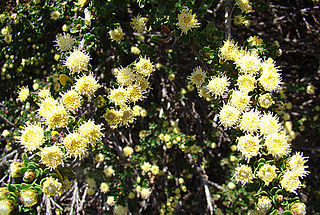
Baccharis patagonica is a species in the genus Baccharis in the family Asteraceae. It is native to southern Argentina and central and southern Chile, including the Juan Fernández Islands.
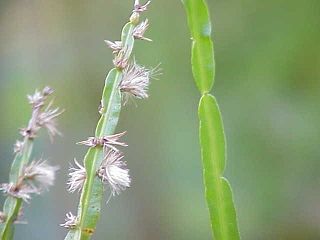
Baccharis genistelloides is a species of flowering plant from the family Asteraceae. B. genistelloides is one of the most studied species in its genus Baccharis regarding its phytochemistry and pharmacological effects. The plant species is widely used in folk medicine.

Baccharis articulata is a species of shrub in the family Asteraceae.

Baccharis macraei is a species of shrub native to Chile and Peru.
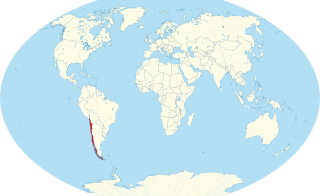
Baccharis intermedia is a species of shrub native to Chile. The species was first formally described by the botanist Augustin Pyramus de Candolle in 1836.
















